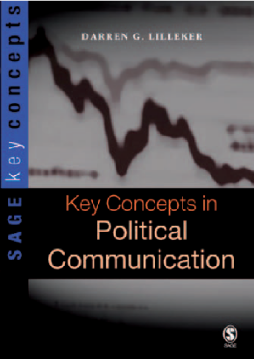
Additional Information
Book Details
Abstract
This is a systematic and accessible introduction to the critical concepts, structures and professional practices of political communication. Lilleker presents over 50 core concepts in political communication which cement together various strands of theory. From aestheticisation to virtual politics, he explains, illustrates and provides selected further reading. He considers both practical and theoretical issues central to political communication and offers a critical assessment of recent developments in political communication.
Table of Contents
| Section Title | Page | Action | Price |
|---|---|---|---|
| PREFACE | |||
| 1. Introduction 1 | |||
| Geert Diemer and Frans P. Huibers | |||
| 2. Signposts of struggle: pipe outlets as the material interface | |||
| between water users and the state in a large-scale irrigation | |||
| system in South India 11 | |||
| Peter P. Mollinga and Alex Bolding | |||
| 3. Intervention in irrigation water division in Bali, Indonesia: | |||
| a case of farmers' circumvention of modern technology 34 | |||
| Lucas Horst | |||
| 4. The materialization of water rights: hydraulic property in | |||
| the extension and rehabilitation of two irrigation systems in | |||
| Bolivia 53 | |||
| Gerben Gerbrandy and Paul Hoogendam | |||
| 5. Religion and local water rights versus land owners and | |||
| state: irrigation in Izucar de Matamoros (west bank), | |||
| Mexico 73 | |||
| Marc Nederlof and Eric van Wayjen | |||
| 6. Rehabilitation of a farmer-managed system in Izucar de | |||
| Matamoros (east bank): two interpretations of technical | |||
| concepts 90 | |||
| Timen Eilander | |||
| 7. From allocation to distribution: operational rules in a | |||
| communal irrigation system in Northern Portugal 101 | |||
| Paul Hoogendam, Adri van den Dries, Jose Portela, Moniek | |||
| Stam and Julia Carvalho | |||
| 8. Effects of a technical intervention programme on water | |||
| distribution and water use 116 | |||
| Adri van den Dries, Paul Hoogendam and Jose Portela | |||
| 9. Designing for fanner management in the Senegal river | |||
| valley 128 | |||
| Ibrahima Dia, Geert Diemer, Wim F. van Driel and | |||
| Frans P. Huibers | |||
| REFERENCES 150 |
